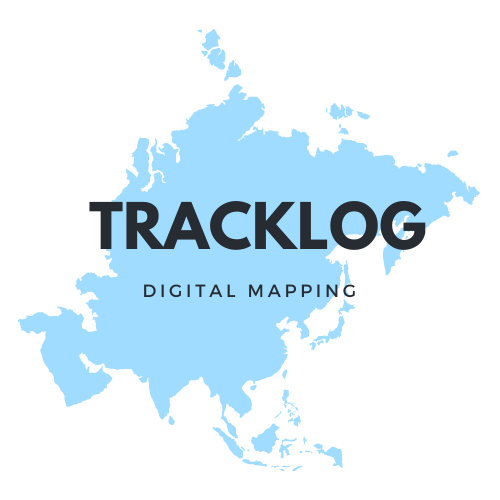When working on a data migration or warehousing project, data mapping refers to the process of matching source data fields to target data fields utilizing data mapping tools. Information is translated from one place to another so that the logical and semantic meanings are preserved and the usability of the destination material is improved. In addition, data would eventually flow from your data warehouse to your BI tools, necessitating yet another round of data mapping to optimize your data for the most insightful information extraction and adherence to the nuances of the tool and the analytics process.
Depending on the goal of your various analytical processes, the same data may require different pre-processing. Your data utilization strategy must include robust and flexible data mapping tools. The reader will gain a better understanding of the fundamentals of data mapping and the reasons for why an ETL process must include it. You are given a thorough description of the top 3 data mapping tools available right now after looking at the important considerations to make before searching for one.
Describe Data Mapping.
Picture Source Simply put, data mapping is the process of establishing a map that will lead source data to the desired database. The target database in question may be a CSV file, a Relational database, or a NoSQL database. What kind of database the user wants to utilize as the target will depend on their preferences.The hierarchy of the data being mapped and the discrepancy between the data structures of the source and the target determine the degree of difficulty of the data integration mapping jobs.
To build database matches between source and target systems, the majority of Data Mapping Tools include pre-built dataset matching templates. An ER(Entity-Relationship) diagram with structured data in sourced entities would be the appearance of a straightforward data mapping template. In contrast to an ER diagram, a data mapping template can be converted into pre-made procedures that can be integrated to the workflow and automated to provide an automated data mapping solution. A Data Mapping Tool quickly and automatically completes this without the need for a human. The amount, schema, and main and foreign keys of the relational databases’ data sources will all affect database mapping.
A data mapping tool: what is it?
For greater growth, the majority of firms are now moving toward data-driven business decisions. The requirement to store and handle the volume of data is rapidly growing along with the size of the businesses. At this stage, data mapping becomes crucial, and doing so manually for big data is laborious and time-consuming. Any amount of data and numerous data sources can be mapped using data mapping tools. Whether a corporation prefers on-premises or open source Data Mapping Tools depends on their specific needs. These solutions facilitate smooth data mapping or automate the mapping process.
Data Mapping’s Value in the ETL Process
Information is gathered from a variety of internal and external sources in order to utilize data and get economic value from it. The next step is to combine this data and transform it using source to target mapping into a format that is appropriate for operational and analytical procedures. Data Models for the source and destination data repositories must match for automated data mapping and data integration to be successful. Data Mapping Software connects the gaps in the schemas of the source and target repositories because this is uncommon in a data warehouse. Businesses will be able to easily combine crucial information from many data sources thanks to this. The accuracy and completeness of the data being moved are affected by inaccurate and erroneous data mapping during the data migration process. Data Migration hence requires a code-free mapping solution that can automate this procedure. Since enterprise information exists in various places and formats, automated data mapping and transformation are crucial for gaining insights and destroying information silos. Before data is loaded into the target database using the Data Conversion Mapping tool provided by Data Mapping Tools, the first stage in data transformation is data modeling, which helps develop a framework of the changes that are to be made to the data.
Considerations for Selecting Data Mapping Tools
You must choose the ideal data mapping software that completely meets your requirements if you want any project involving data integration, enterprise data transformation, or data warehousing to succeed. To start the process of choosing the best tool, you must first determine the specific needs and characteristics for data modeling. So, among the essential components of a quality Data Mapping solution are:It is essential to use a data mapping tool that offers a code-free approach to generate data maps and process data using the generally intuitive drag-and-drop user interface.
Data mapping process
Ability to Calendar and Automate Database Mapping Jobs: Choosing a data mapping software that can arrange the database workflow by utilizing a time-based mapping function and event schedule that is triggered by specific occurrences is crucial.Instant Data Mapping Preview: Pick a data mapping program that can identify and fix application mapping issues before they arise. As a result, the user would be able to see both processed and raw data at any point during the data modeling process. Support for Multiple Systems: All data mapping software should be able to connect to a variety of structured, unstructured, and semi-structured data sources, including databases, REST APIs, web services, and FLAT file formats like XML, JSON, EDI, Excel, etc.
Scale your Data Integration using Hevo’s Fault-Tolerant No Code Data Pipeline without any difficulty
Data teams are essential to driving data-driven decisions as firms’ capacity to collect data grows exponentially. Even yet, they find it difficult to combine the disparate data in their warehouse to create a single source of truth. Data integration is a headache because of faulty pipelines, problems with the quality of the data, glitches, errors, and a lack of control and visibility over the data flow.

Hevo’s Data Pipeline Platform is used by 1000+ data teams to quickly and seamlessly combine data from more than 150 sources. With Hevo’s fault-tolerant architecture, billions of data events from sources as diverse as SaaS apps, databases, file storage, and streaming sources may be duplicated in almost real-time. Additionally, Hevo gives data teams total control over the pipeline monitoring, auto-schema management, and customized ingestion/loading schedules through user-friendly dashboards.
Scaled Reliability -With Hevo, you get a fault-tolerant architecture of the highest caliber that scales with no data loss and little latency.Monitoring and Observability—Use logical dashboards that show every pipeline and data flow statistic to keep track on the condition of the pipeline. With Alerts and Activity Logs, you can give your ELT real-time visibility. Maintain Total Control – When automation is insufficient, Hevo offers flexibility, including custom schema management, JSON parsing, destination workbench, data ingestion options, and ingestion and load frequency.After the data has been imported into your warehouse, it can be difficult to correct incorrect schema. In order to spare you the discomfort of schema mistakes, Hevo automatically maps the source schema with the target warehouse.We are the most favored data pipeline software on review sites as a result of all of this, straightforward pricing, and round-the-clock customer service.
The Best Data Mapping Tool Categories. Mapping
These best data mapping tools are distinguished by making their source codes available to the general public and allowing modifications to the source code under certain restrictions. The tool mentioned in the following is Talend Open Studio for Data Integration.
Open Studio for Data Integration with Talend
IconsIt is able to be used as a tool for data integration and performs a little bit more than just source to target mapping. For numerous sources, Talend Open Studio provides more than 100 connectors. Continuous integration is offered, which lowers deployment and repository management costs.For its customers to graphically map the source data to the target data types, it offers a graphical user interface. With Talend’s GUI-driven Master Data Management (MDM) feature, businesses may have a unified and consistent view of their company data. You can include your unique business requirements and build portable bespoke Java code using Talend. Data integration tool will incorporate new data on the maps.

